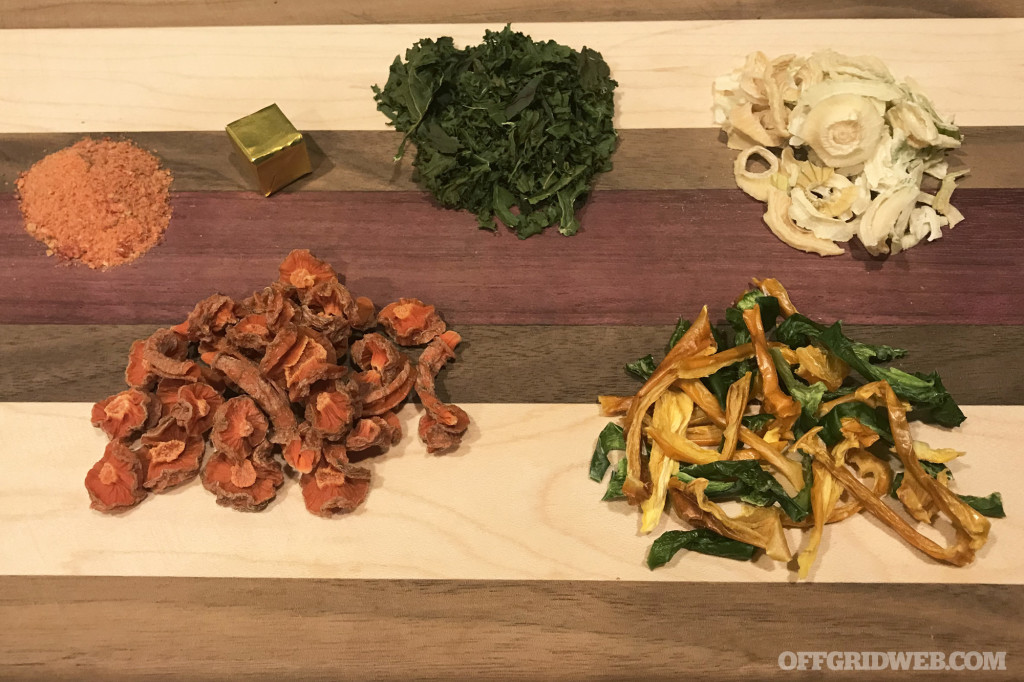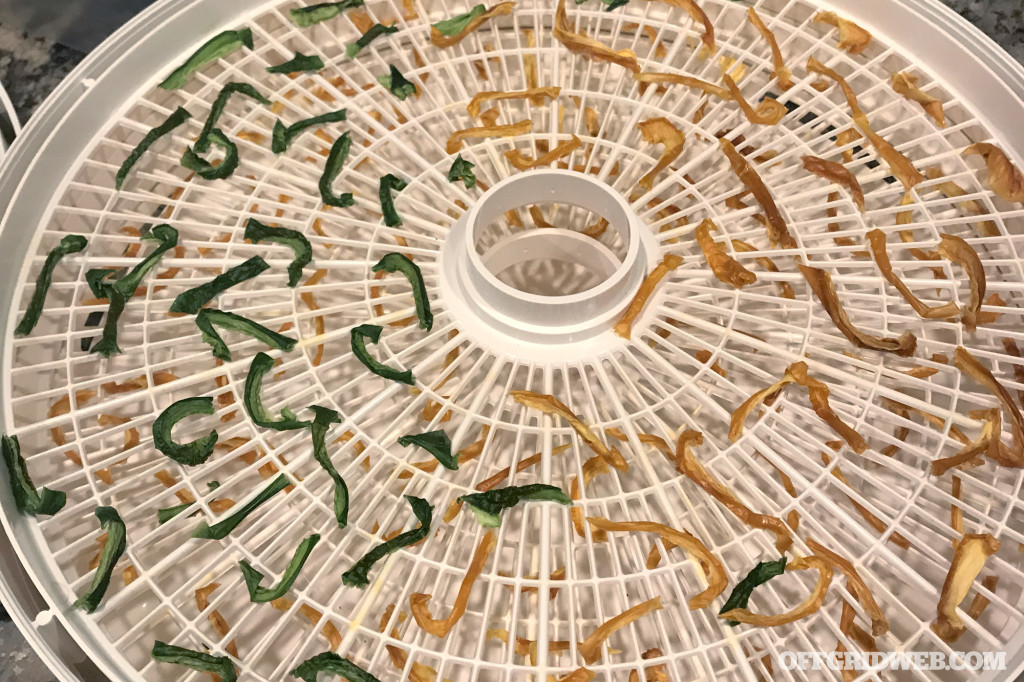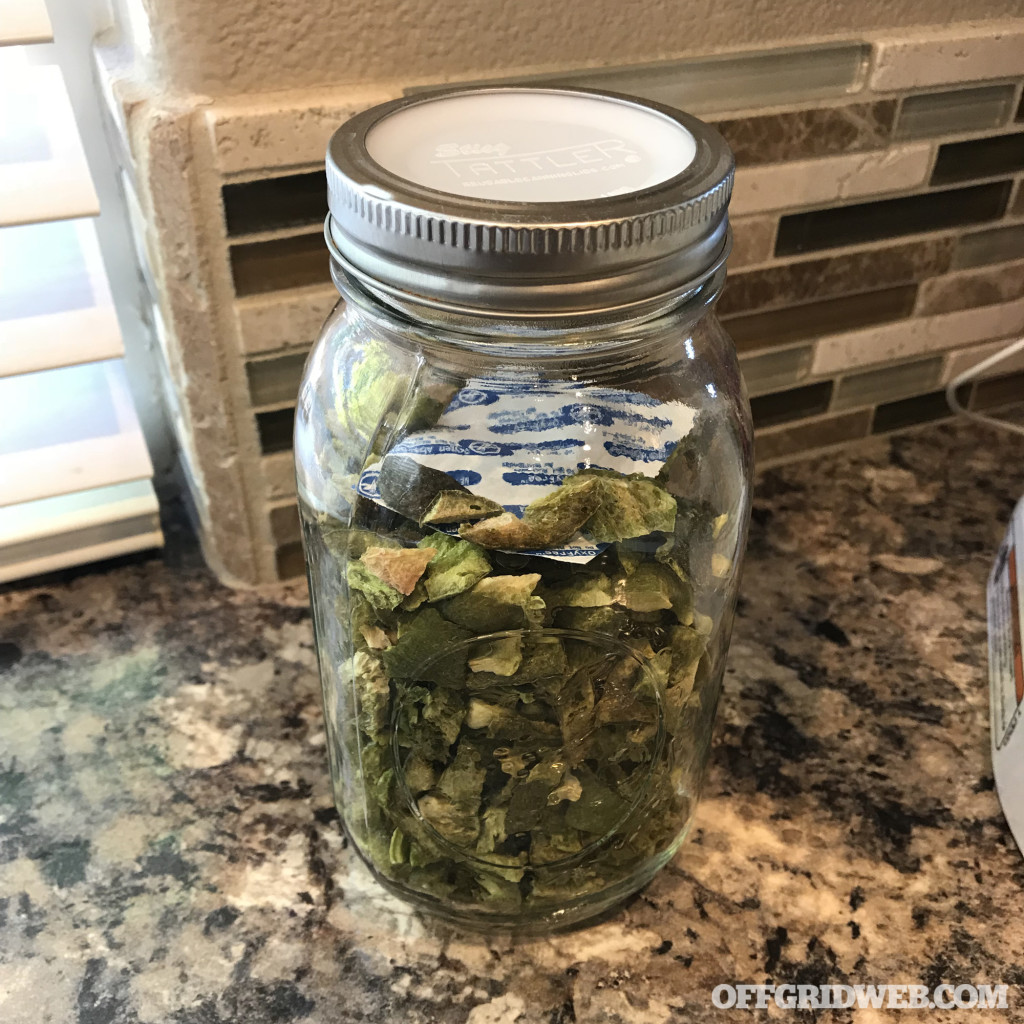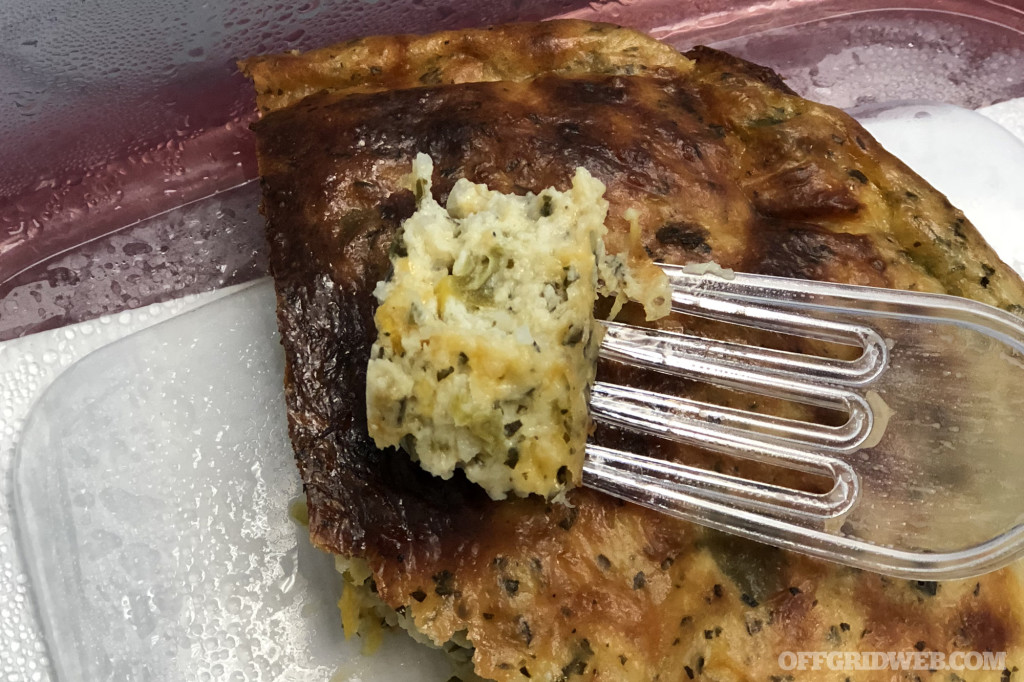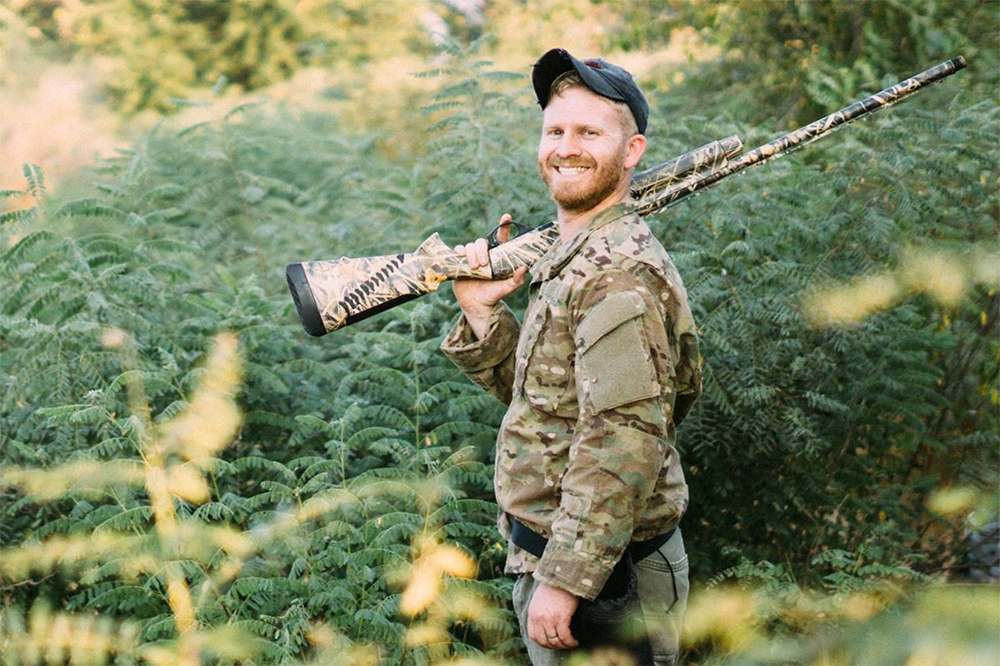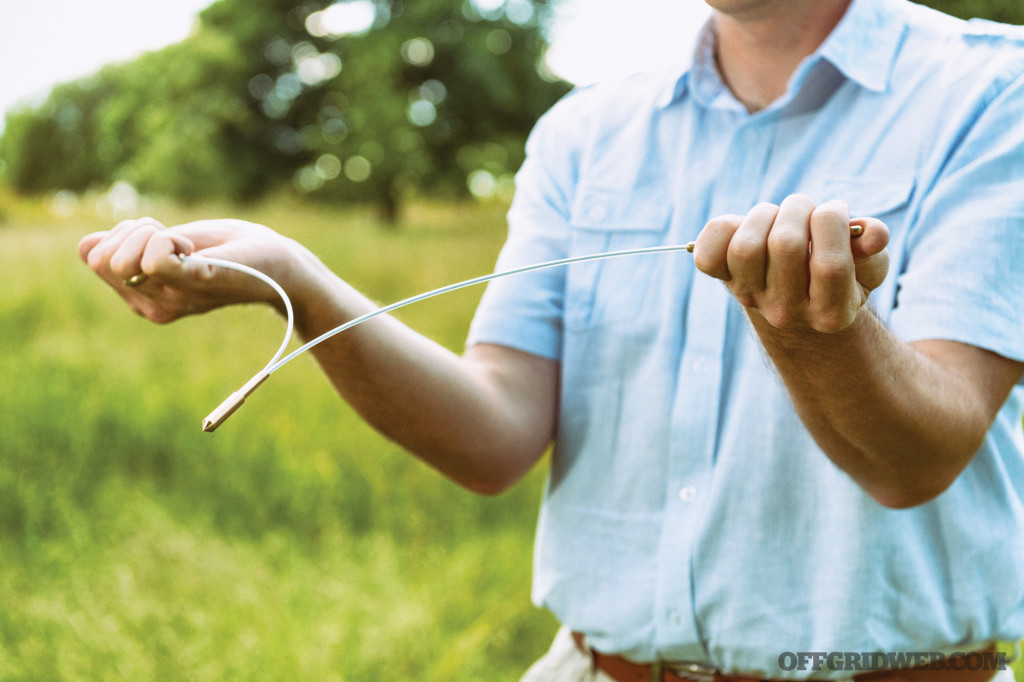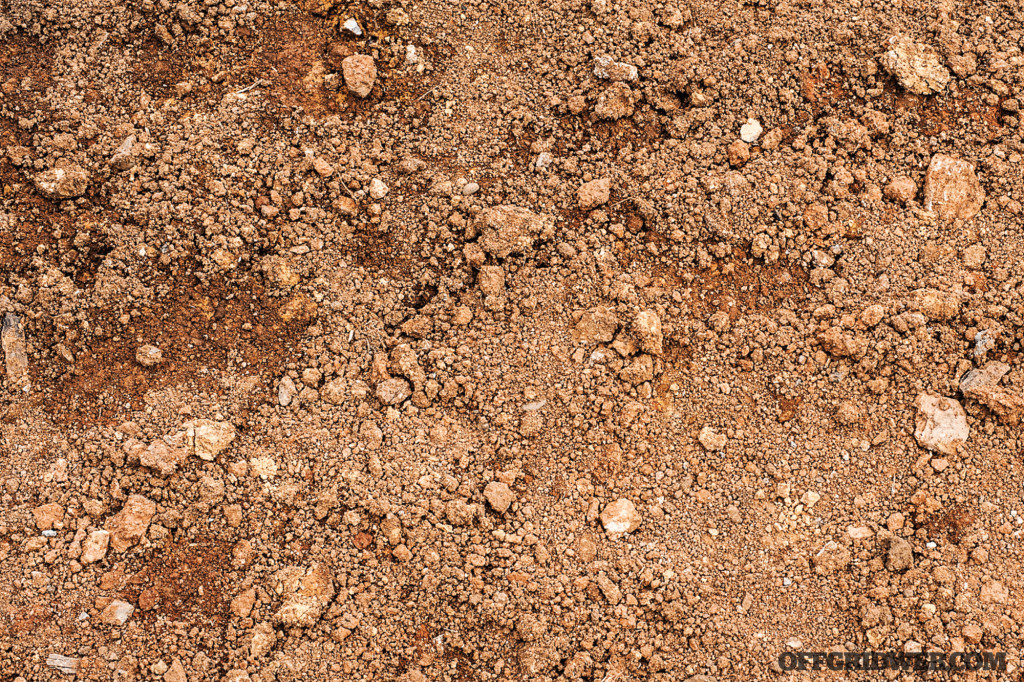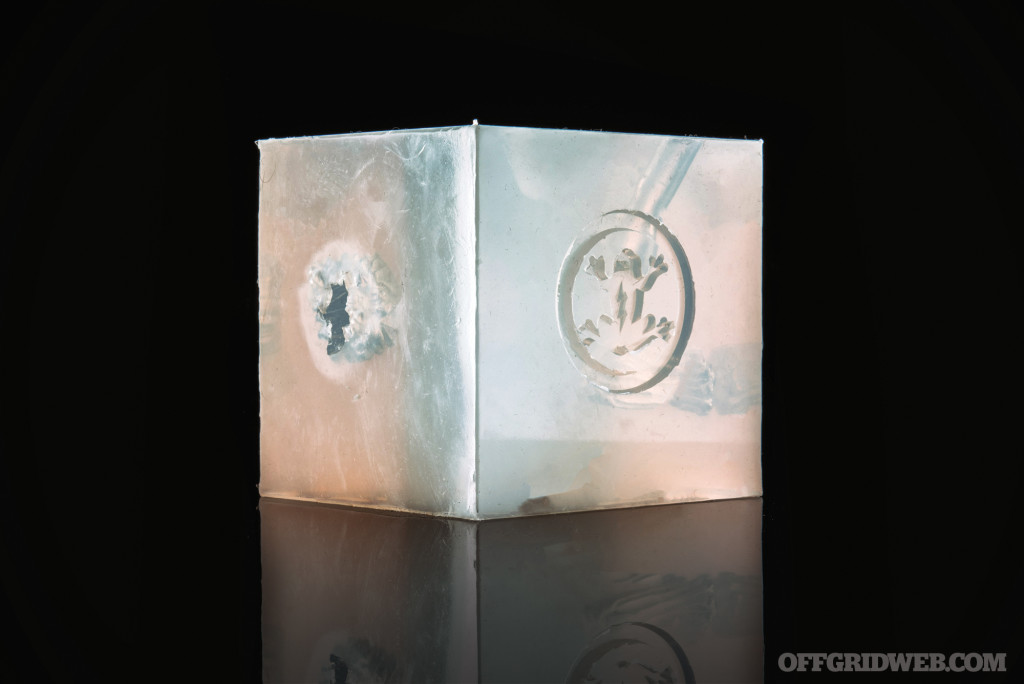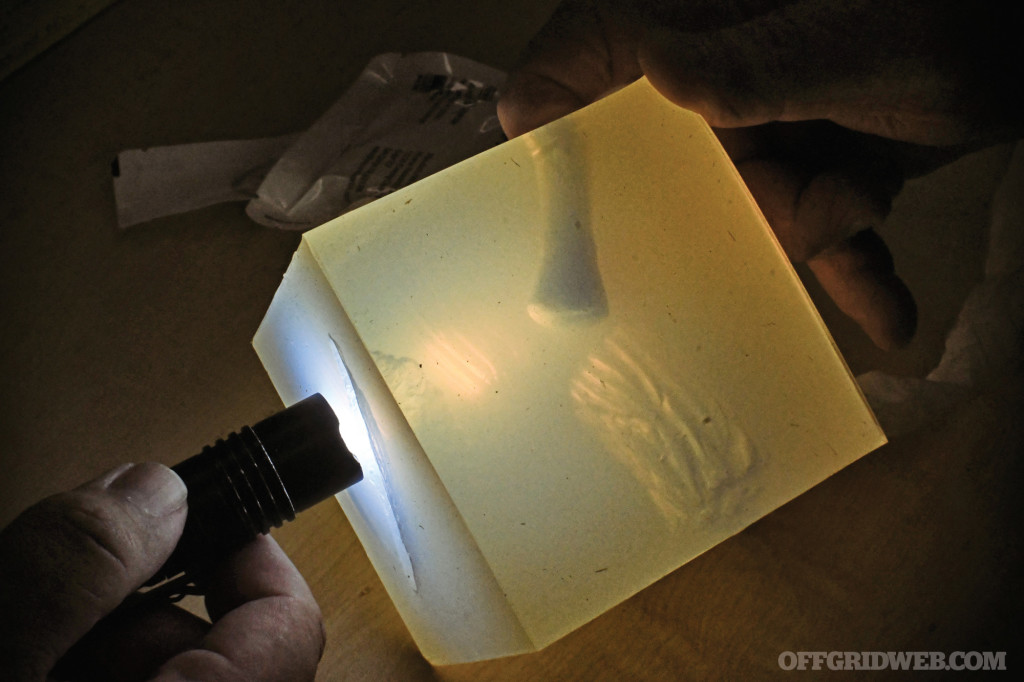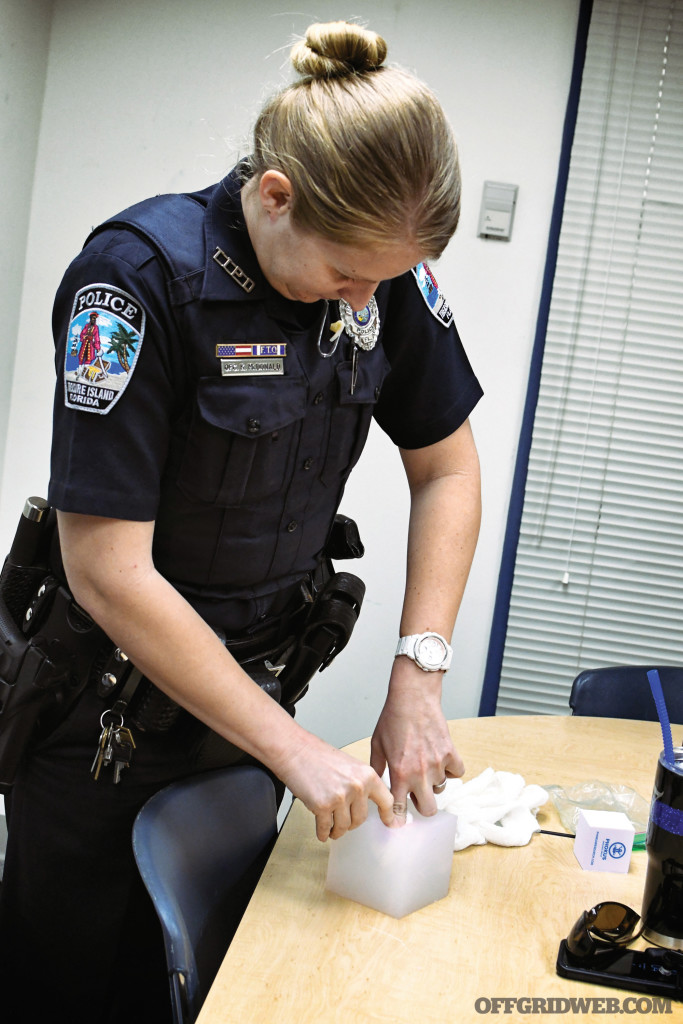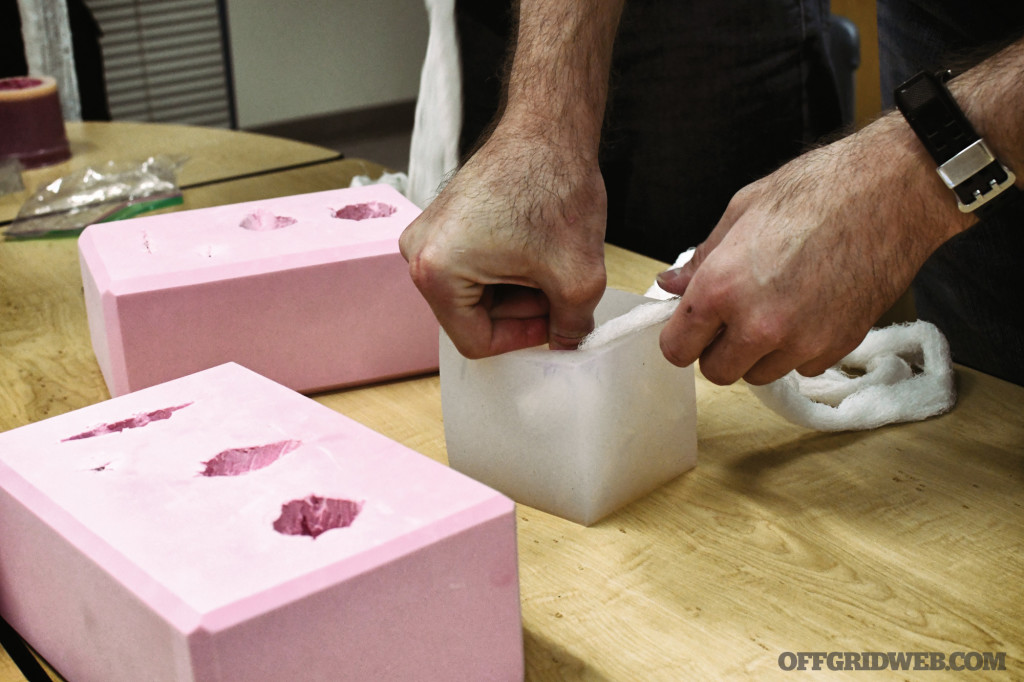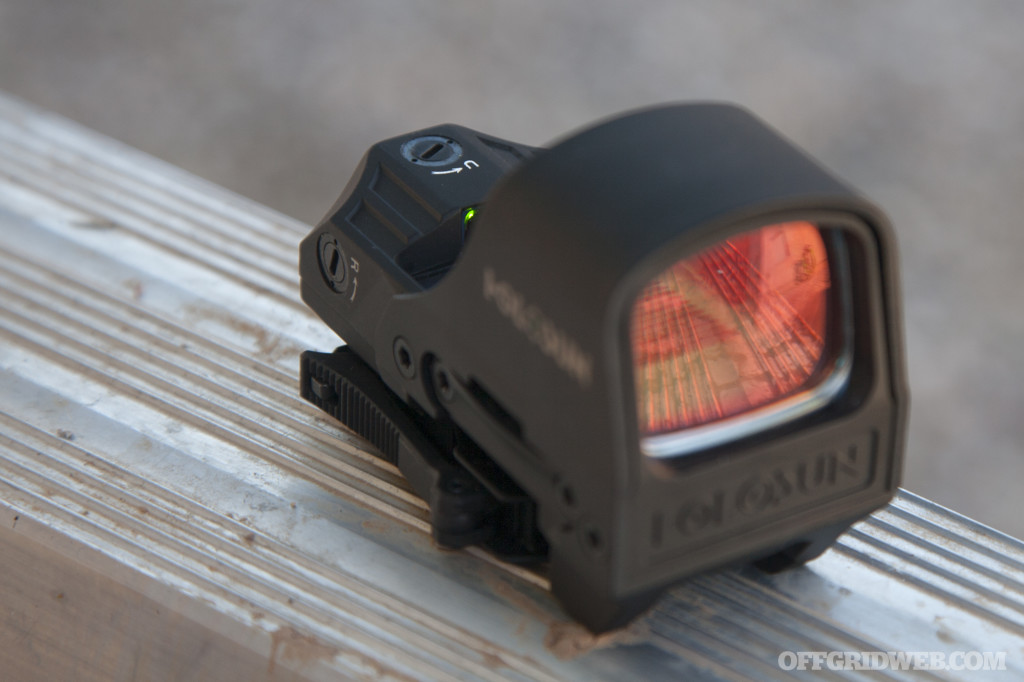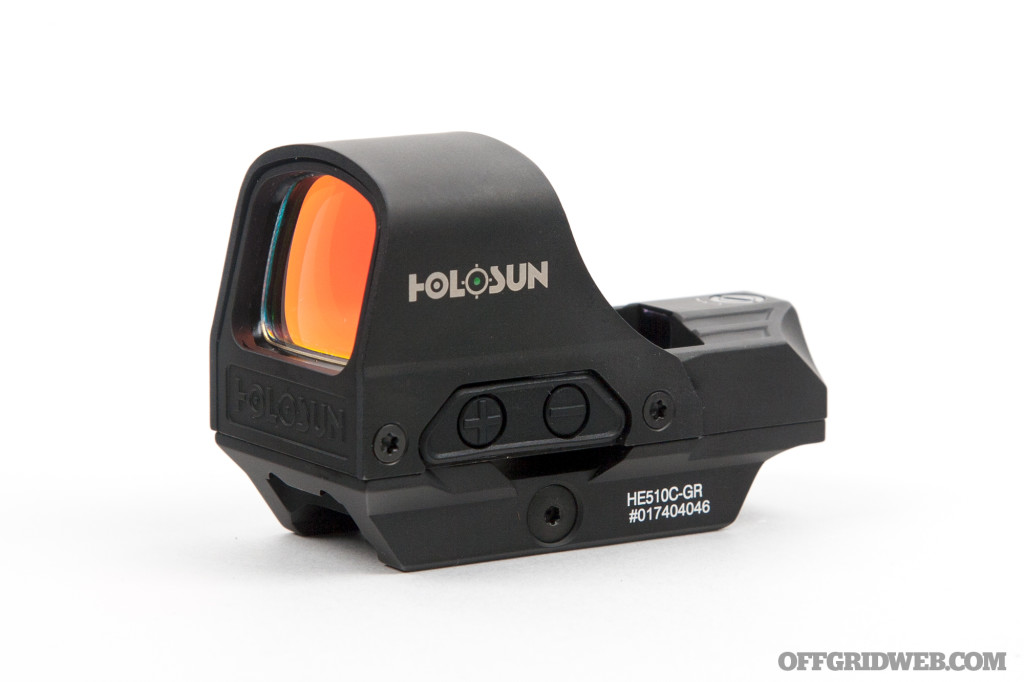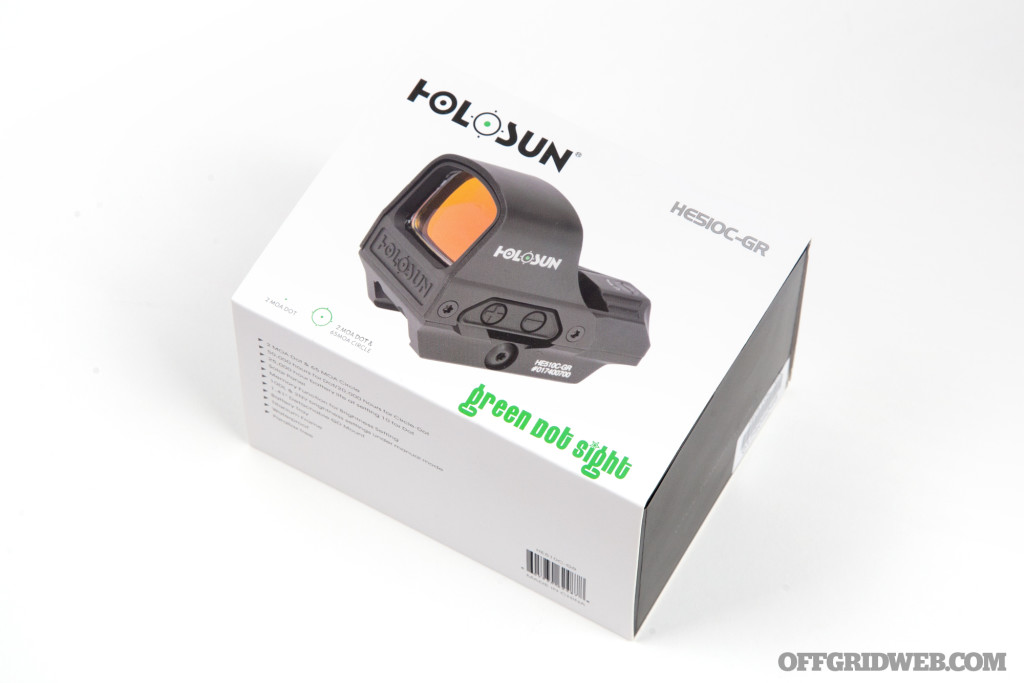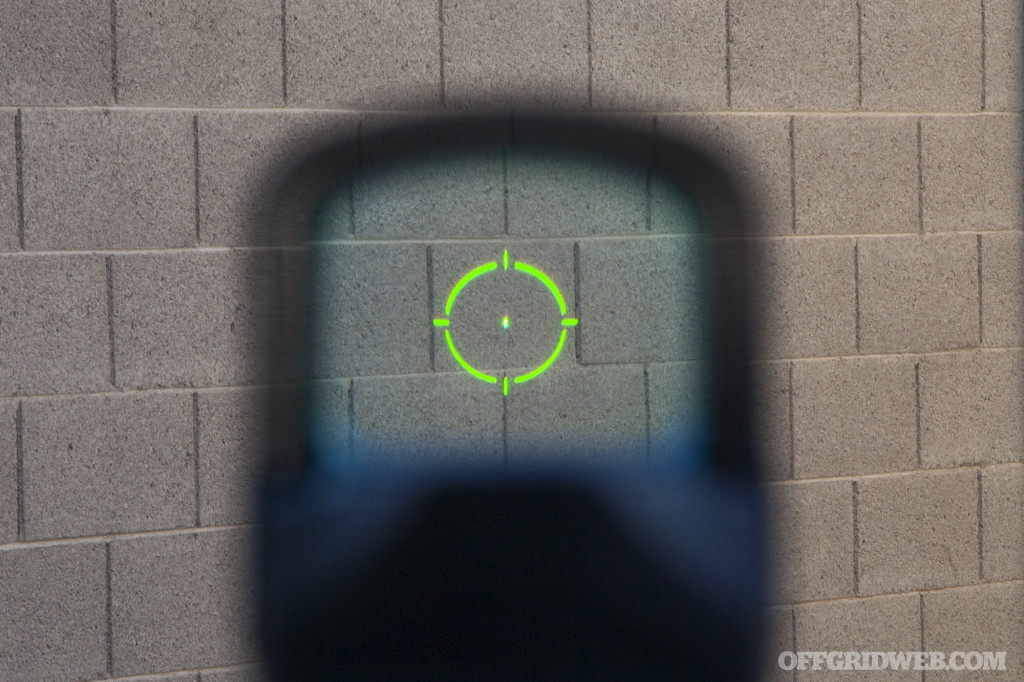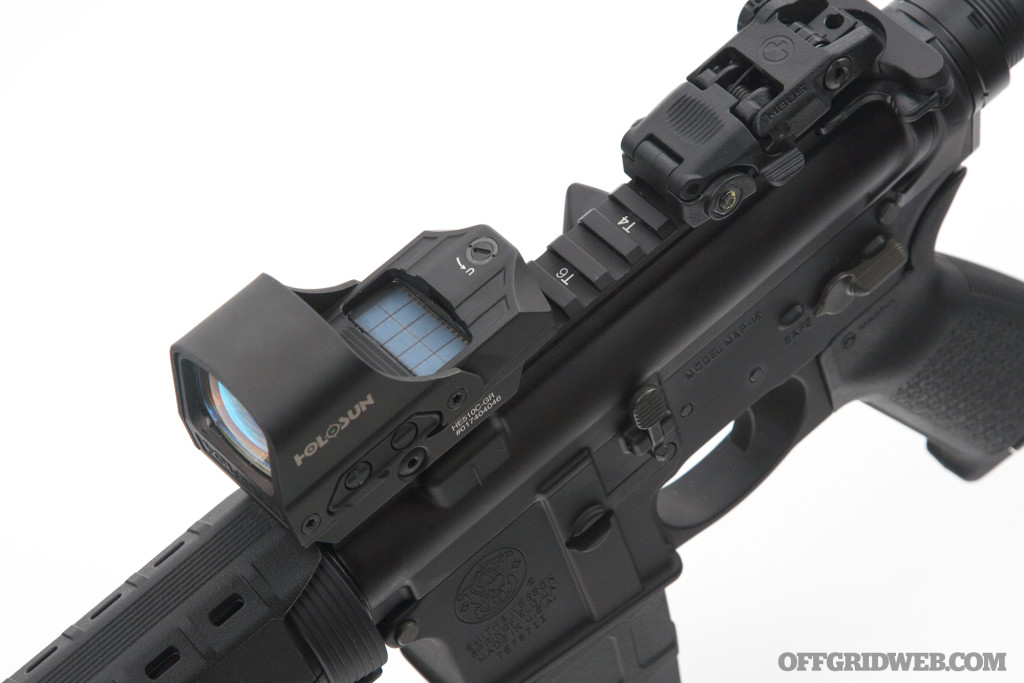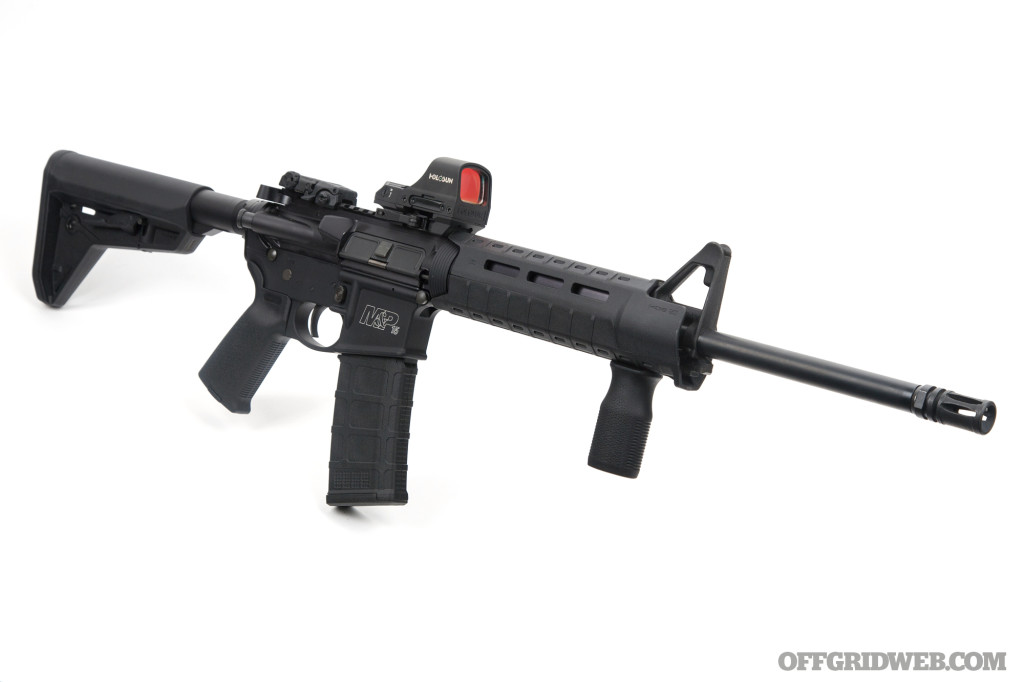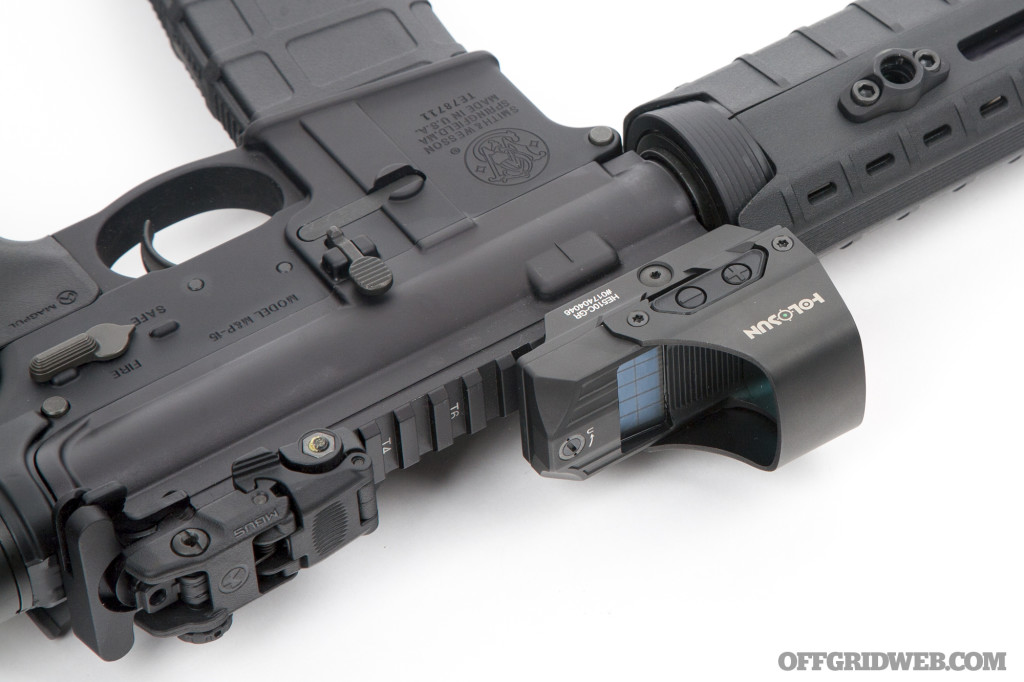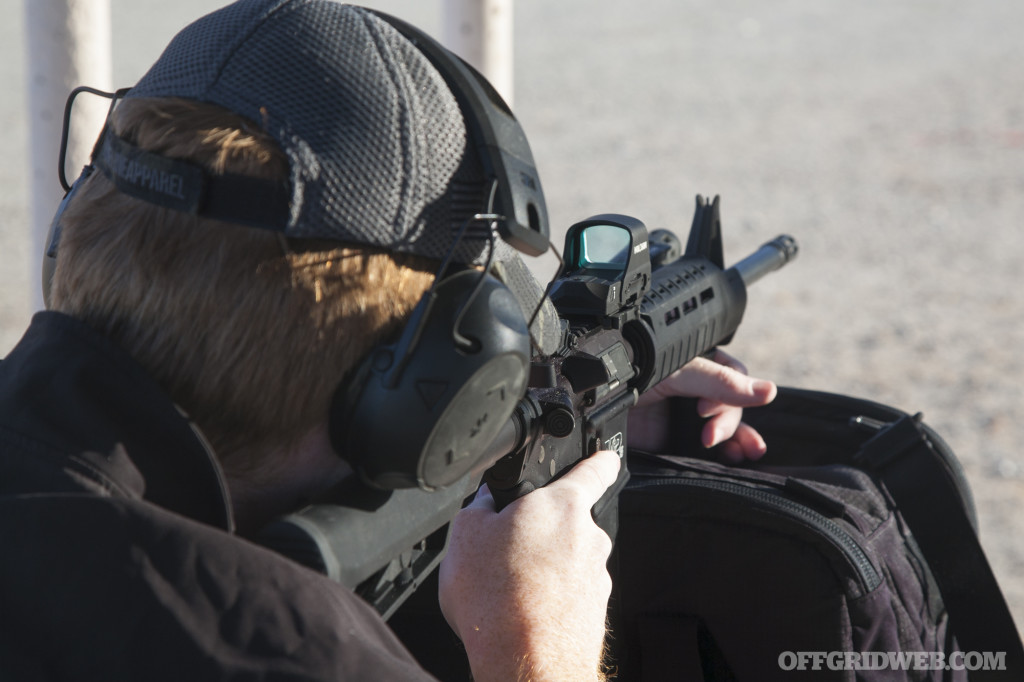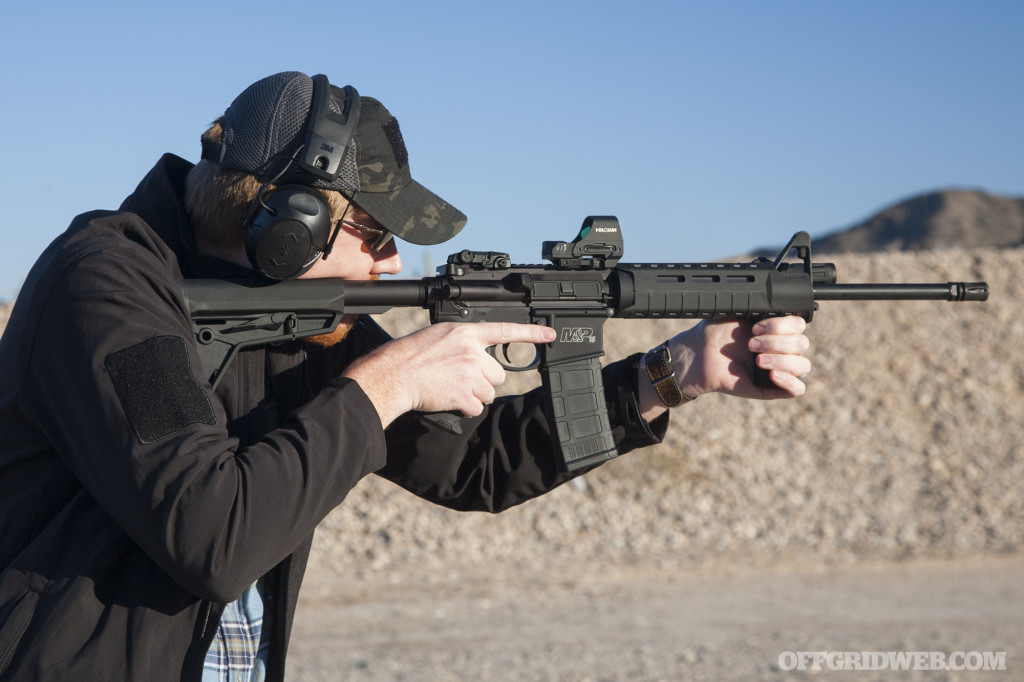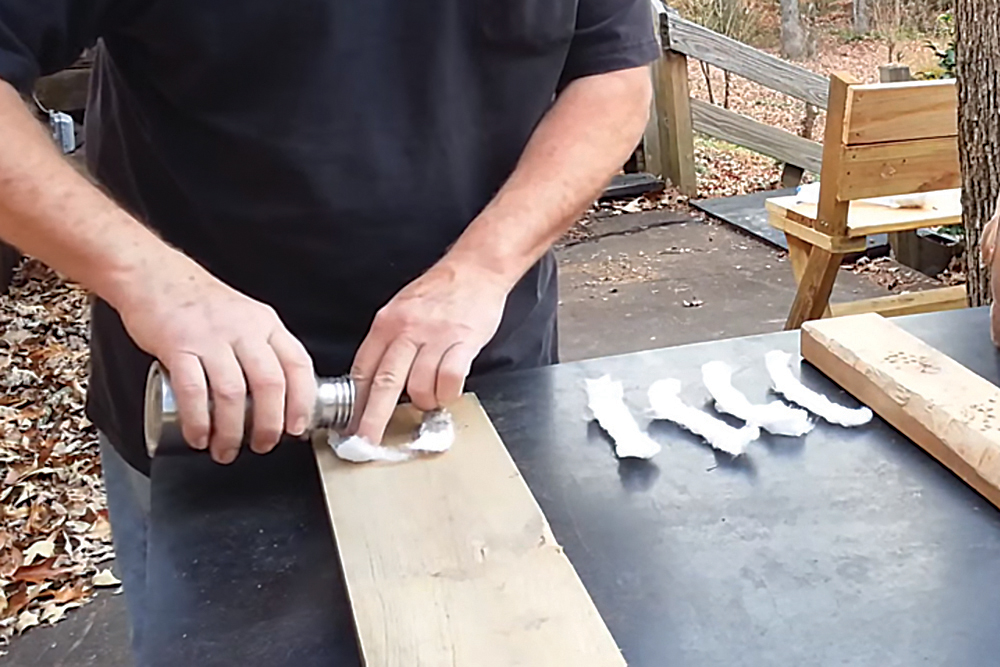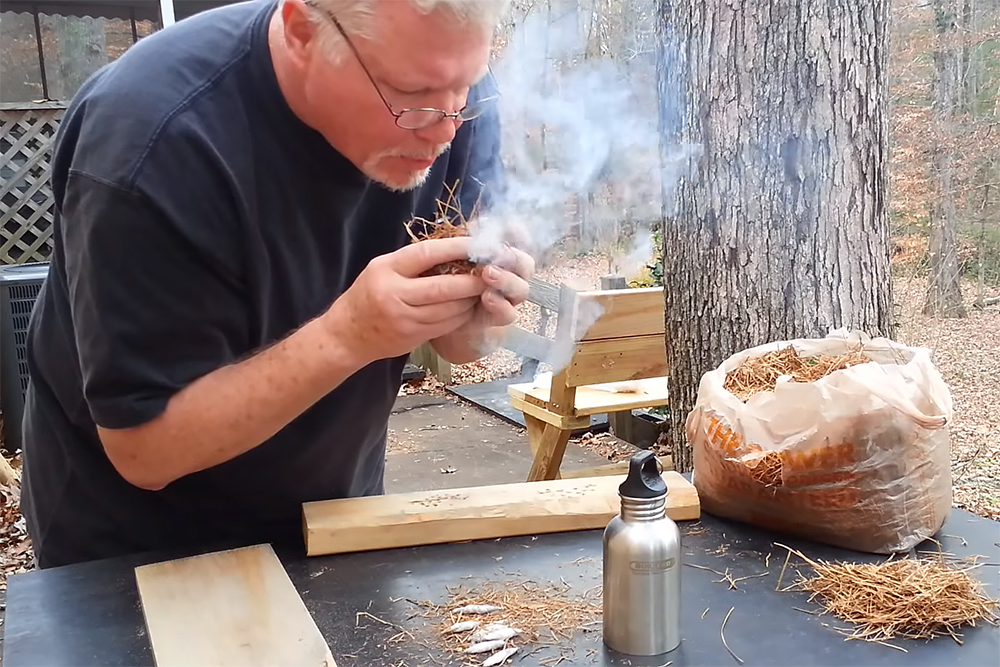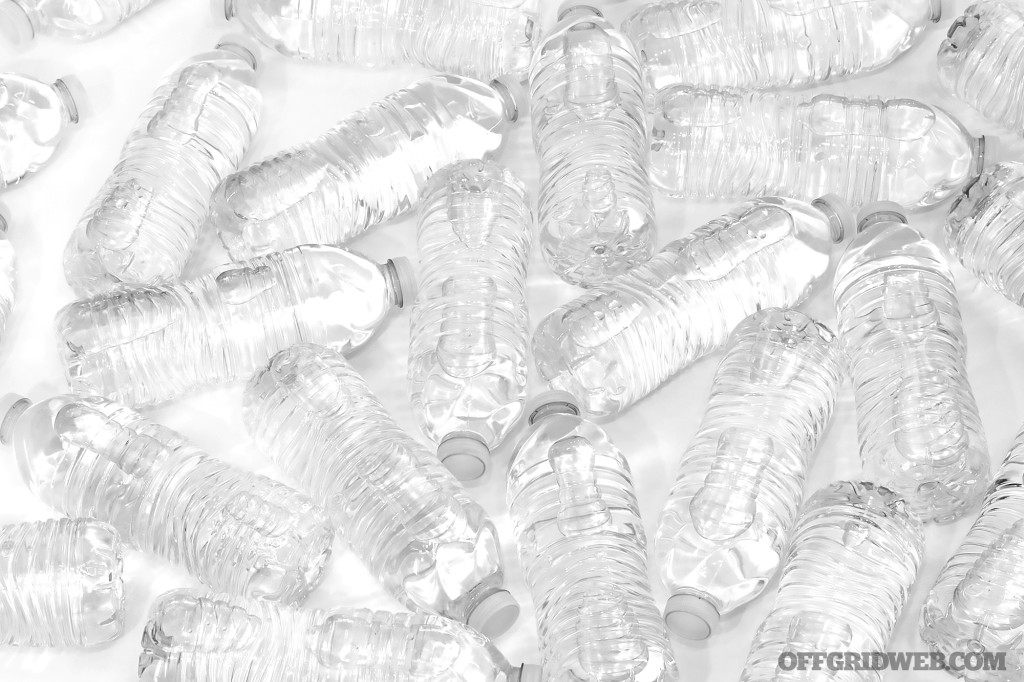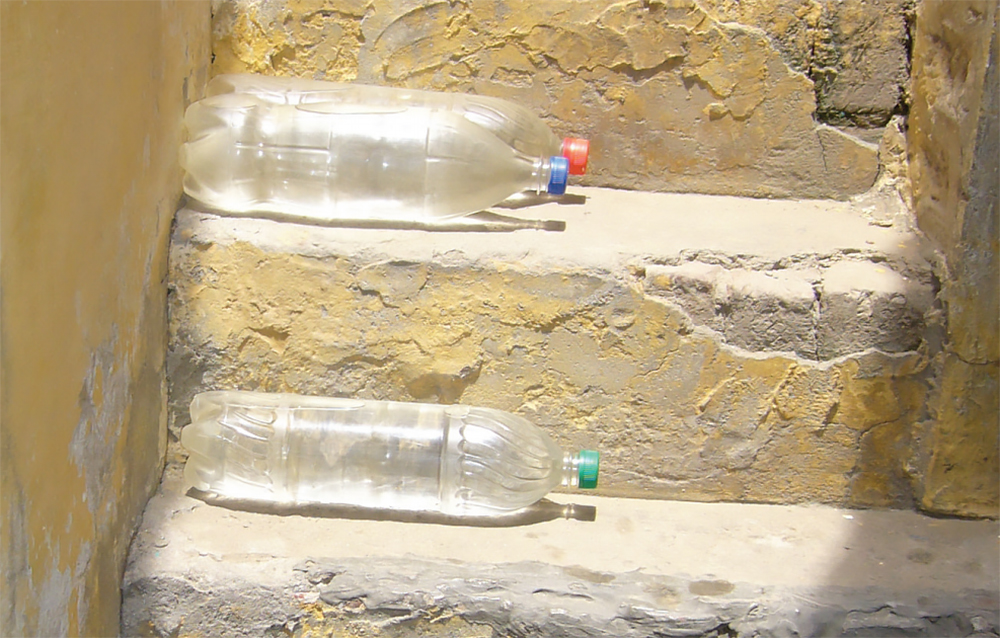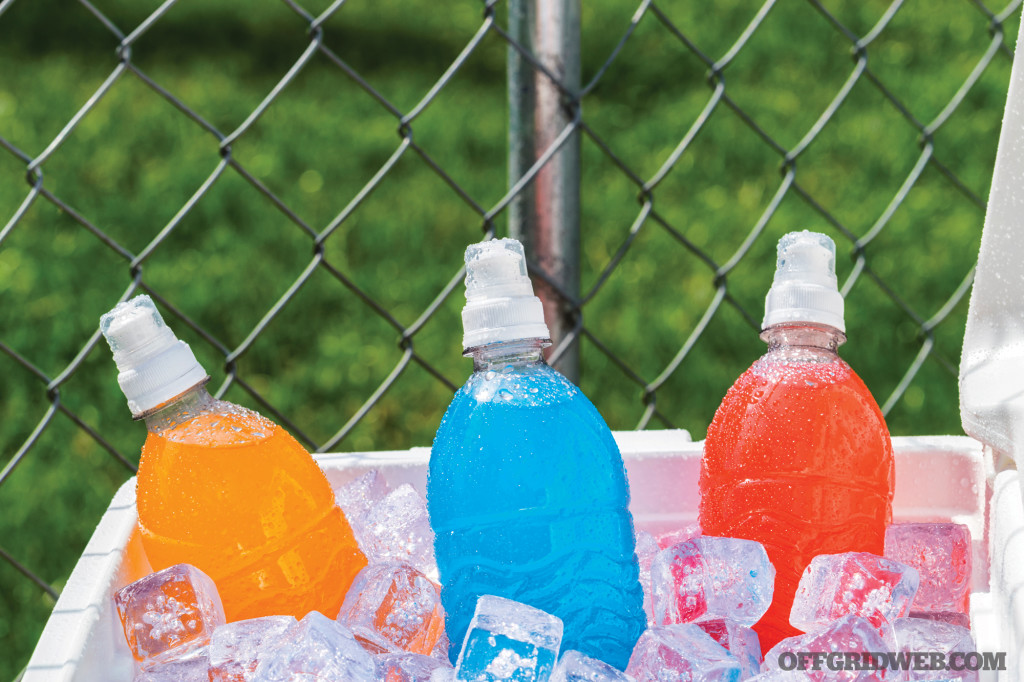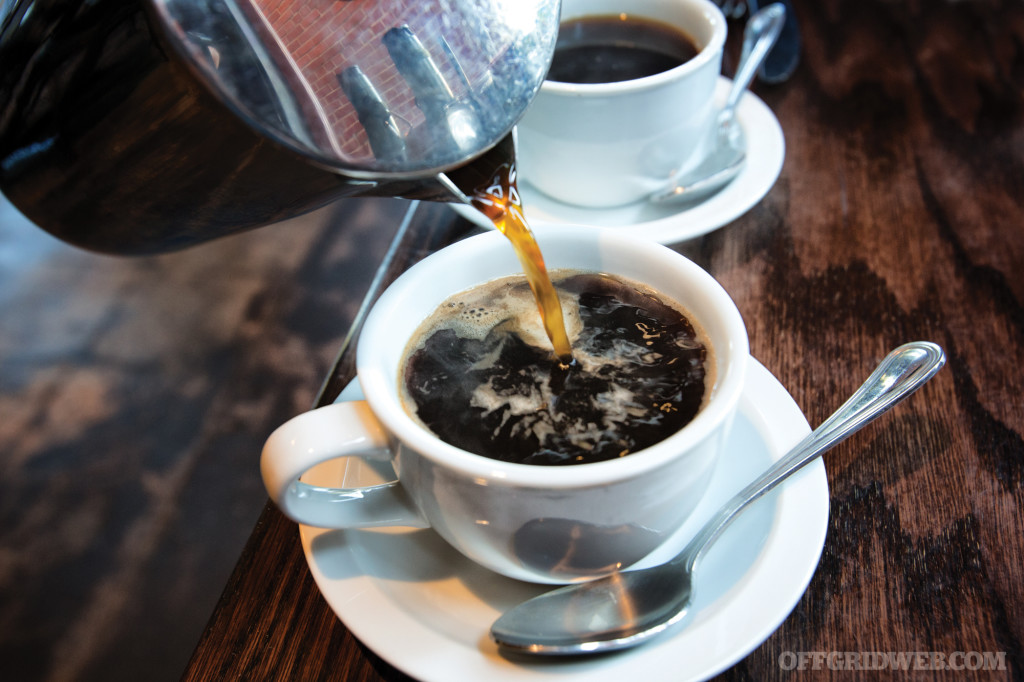We have our EDC and SHTF gear list for everything from going to the store to a doomsday incident. But what preparation have you made for your kids as you send them off to school? With mainstream media setting the stage for deranged individuals to get their claim to fame by going into so-called “safe zones” and harming the innocent, we’re forced to start looking at ways to protect our families in all facets of their daily life. Body armor is more economically accessible than ever, so you can wrap your loved ones, or even yourself, up in the latest Kevlar protection in case every parent’s nightmare becomes your reality.
With the influx of media attention, today’s market is packed with options for backpack armor. Some of these we’d literally stand behind, while others need some refining before they’re ready to catch rounds in the real world. We hit the range with several test samples to examine some options for armoring up our kids’ backpacks or even our own EDC bags.
The Testing
To simulate a realistic test, we looked at how most users would wear the bags during a shooting incident. The bags would likely either be held as a shield or worn as a vest. To that end, we arranged the following test parameters to best simulate these scenarios without the benefit of a fully-appointed ballistics lab:
Each bag was suspended by a target stand and shot in its center mass from a range of 15 meters.
Level IIIA bags were shot with an S&W M&P 2.0 Compact 9mm loaded with CCI Blazer 115-grain FMJ.
Level III+ were shot with an AR15 using a 20-inch barrel and .223 Remington 62-grain FMJ.
Note that a level III+ rating isn’t an actual NIJ standard, denoting that the manufacturer asserts the armor will meet the NIJ level III standard in addition to other threats (see sidebar to the right). We tested them with .223, given the ubiquity of the round in America. The two III+ plates in this guide are advertised to defend against .223.
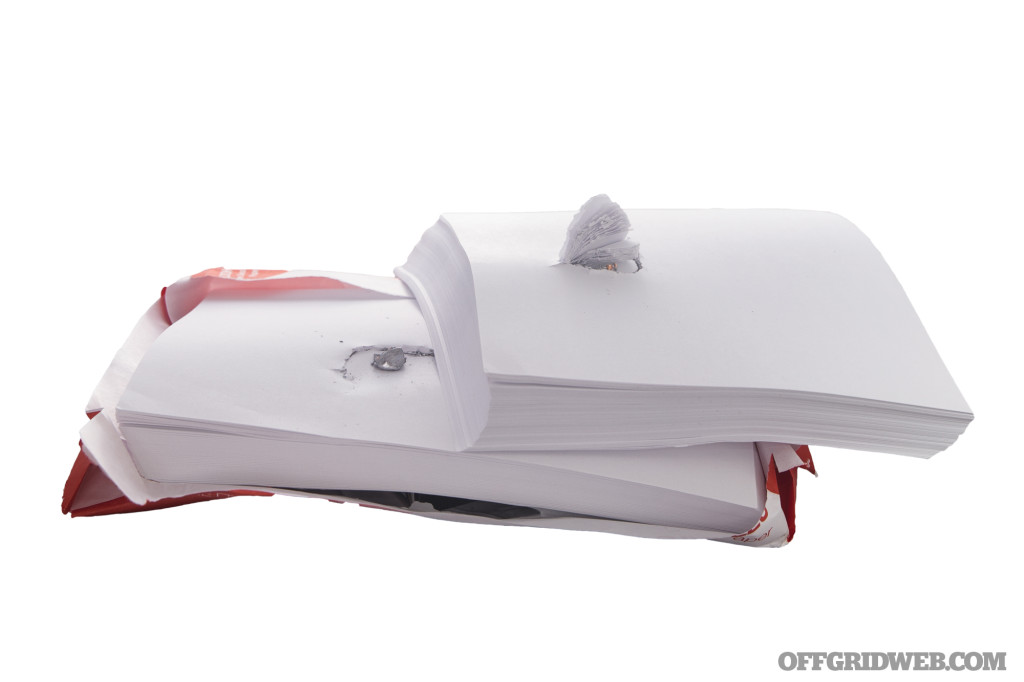
Initially, each bag was shot with a 500-page ream of 20-pound paper, 2 inches thick, in front of it. This simulates the approximate thickness of two textbooks to see how much, if anything, a backpack’s normal contents would do to stop a bullet on its own. Surprisingly, this was enough to stop a 9mm round. Of course, we wouldn’t recommend using paper reams alone as body armor, but the experiment provides some empirical evidence about how well it might stop a bullet. We re-tested each IIIA panel without the paper to see how well they’d hold up alone to defend against a caliber they’re rated for. As expected, the reams alone didn’t stop the .223 rounds at our testing distance.
Armor Considerations
Weight: Look for the highest-level protection with the most reasonable weight. We all want the highest level of protection, but it comes at the cost of weight and bulkiness. With some plates weighing more than 10 pounds, it can become almost impractical for daily carry and may very quickly be the first item removed when the backpack needs to be lightened up.
Independent Testing: Look for plates or panels that are independently tested. Any manufacturer can imply all of their products meet NIJ standards, but a reputable manufacturer will have an independent lab put each specific product through the paces. Don’t just check if the company’s other products are tested, look for a recent testing report for the specific product you’re buying.
Bigger is Better: Get the panel that will cover the most real estate inside your bag or backpack. This provides the most protection and most cover as a shield. While the bad guy is slinging rounds and not aiming for a small panel, you would be surprised how small you can make yourself behind even a 10-by-13-inch panel.
Train and Educate: Teaching loved ones how to react in an active shooter incident is just as important as fire drills or any other disaster planning. Develop the mindset that a ballistic backpack isn’t a personal effect to be left behind — it’s a defensive tool to grab and take with you in an emergency.

Potential Issues
Don’t Place and Forget: Especially if you’re integrating a soft panel into your pack, check the panel placement frequently. We all get in a hurry and cram books, computers, and other items into a pack. If not located in a snug compartment, soft armor panels can easily get stuffed to the bottom of the pocket and won’t do much good in that position.
Humidity: You might think that Miami humidity only turns women’s hair into a bad ’80s album cover, but in humid conditions, Kevlar fibers puff up and create separation between the weave. This results in a reduction of the armor’s stopping ability. The same applies to wet armor — that stopping ability is reduced much more. NIJ testing indicates that armor’s effectiveness returns once it’s dried out completely.
ICW: “In Conjunction With” systems are a hard plate and soft armor backer that are designed to be used together to provide the rated protection. The plate degrades the projectile to a safe velocity to be captured by the second layer of soft armor. If you use the plate or soft armor by themselves, you won’t receive the listed protection, though some may indicate another rating when used standalone.
New and Improved!: The newest high-tech armor choices may sound appealing, but at times it’s best to wait. Give some subject-matter experts an opportunity to put the products through their paces and see what stands the test of time.
Expiration: The NIJ states that body armor must have an expiration date listed by its manufacturer. Most manufacturers put a five-year expiration date on their panels, but look at the tag to be certain.
NIJ Armor Ratings Explained
The National Institute of Justice (NIJ), a division of the Department of Justice, has been setting voluntary body armor standards since 1972. Its testing standards set the baseline for expectations of performance of body armor in the United States. Note that the “A” suffix of any body armor category, counterintuitively denotes a lower level of protection than the parent category. The most commonly seen ratings (the latest NIJ 0101.06 revision) certify protection from the following specific threats:
Handgun Calibers
- Level IIA: 9mm FMJ 124-grain bullets at 1,225 fps and .40 S&W FMJ 180-grain bullets at 1,155 fps (six shots)
- Level II: 9mm FMJ 124-grain bullets at 1,305 fps and .357 Magnum JSP 158-grain bullets at 1,430 fps (six shots)
- Level IIIA: .357 Sig FMJ 125-grain bullets at 1,470 fps and .44 Magnum SJHP 240-grain bullets at 1,430 fps (six shots)
Rifle Calibers
- Level III: 7.62x51mm FMJ steel-jacketed 147-grain bullets (M80) at 2,780 fps (minimum of six hits) Note: 5.56 may or may not be stopped by Level III, depending on bullet construction and velocity, which is largely dependent on barrel length. For example, at close range, M193 ball from a 20-inch barrel is harder to stop than M855 from a 16-inch barrel, despite the latter having a steel penetrator. This is due to the 55gr bullet’s higher velocity.
- Level IV: .30 caliber armor piercing bullets (.30-06 M2 AP) at 2,880 fps (single hit)
Body Armor FAQs
Are body armor panels TSA approved?
Yes! TSA has permitted body armor in carry-on and checked luggage for airline travel. Don’t be surprised if you receive some extra scrutiny or a trip to the special room though.
Can I own body armor?
Yes, it’s legal in all 50 states unless you are a felon of a violent crime. And it can be shipped to your doorstep in all states, except Connecticut.
CYA Tactical Veterans MFG Level IIIA Soft Armor
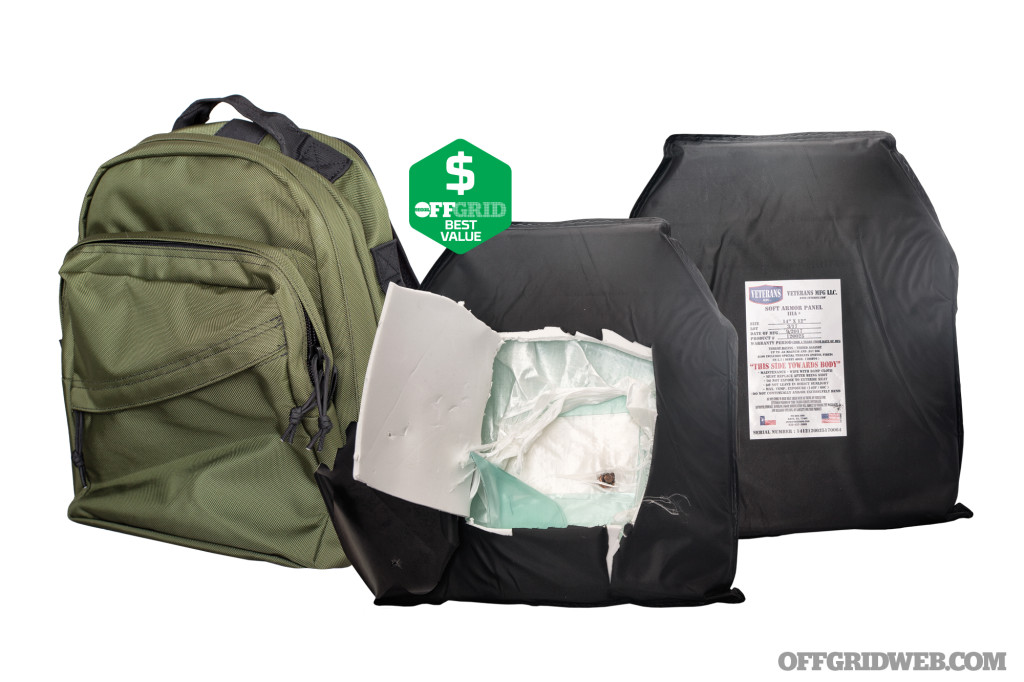
Protection Level
IIIA Double Panel
Dimensions
12 by 14 by 0.5 inches
Weight
1 pound
Tested Inside
EDC Minimalist Pack
Test Result
PASS
MSRP
$315
URL
www.cyaconcealment.com
Notes
CYA Tactical was founded by James Renteria who spent years in situations where the threat of getting shot was a daily reality. While in Iraq, he started contemplating how to combine armor with the everyday functionality of a backpack to design a modular protective system. CYA Tactical’s system can be set up for a child to take to school or incorporated into a vest for first responders to incidents. The EDC Minimalist Pack system includes the panel, but you can also buy the panel individually. The CYA Tactical panel stopped the 9mm bullet in the first two layers of armor fabric (the CYA Tactical has extra material on the cover for water resistance) without any bullet deviation; no rear panel deformation was noted. The backpack’s design is pretty standard fare with three compartments and plenty of room for books and laptop.
Premier Body Armor Vertx EDC Ready Panel
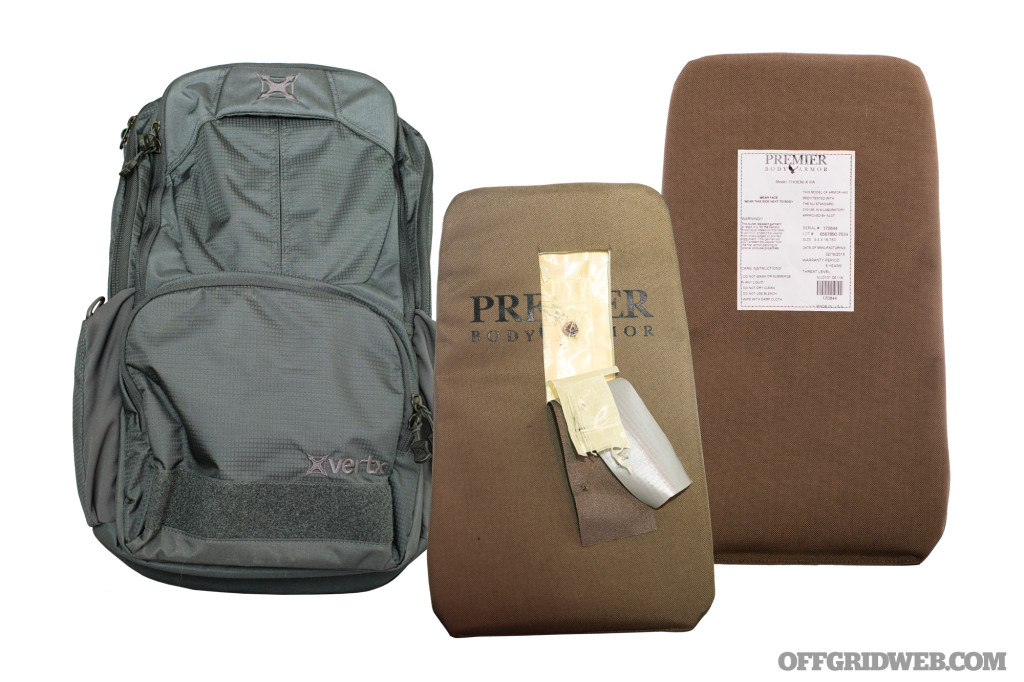
Protection Level
IIIA
Dimensions
9.5 by 16.75 by 0.22 inches
Weight
1.49 pounds
Tested Inside
Vertx EDC Ready Pack
Test Result
PASS
MSRP
$200 (panel)
URL
www.premierbodyarmor.com
Notes
This panel from Premier Body Armor is designed specifically for the Vertx EDC Ready Pack and makes an impressive daily item for anyone from school children to adults. It provides ample room for a laptop and a couple of books without adding much extra bulk. The pack’s internal Kydex panel is replaced with the armor panel and maintains rigidity, while adding ballistic stopping power. The pack is sold separately by Vertx; Premier offers other panel shapes to fit various models. The Premier panel stopped the 9mm bullet in the second layer of armored fabric, with less than 1 inch of displacement of the bullet in the panel. The Vertx EDC Ready Pack will accommodate a 15-inch laptop, has several internal compartments to keep your daily EDC organized, and is mesh lined to accommodate customization of pouches.
Leatherback Gear Leatherback Civilian One

Protection Level
IIIA
Dimensions
19.5 by 13.5 by 7.5 inches
Weight
5 pounds, 3 ounces (2x panels)
Tested Inside
Leatherback Civilian One pack
Test Result
PASS
MSRP
$329
URL
www.leatherbackgear.com
Notes
Leatherback Gear’s civilian backpack was our overall favorite of the bags in this guide. This bag is very inconspicuous to the point that a casual observer would never suspect double armor panels are carried inside. The company’s founders, a team of law enforcement and first responders, noticed the vulnerability of victims after responding to an active shooter event. So they set out to design a purpose-built defensive backpack, which splits apart to protect your front and back. One dig on Leatherback’s marketing material is their claim that the ITW Fastex straps “transform into tourniquets” — we certainly wouldn’t want to rely on these thin straps to stop blood flow. This system includes both pack and front and back panels, although a panel can be purchased separately. During testing, the panel stopped the 9mm bullet in the third layer of armored fabric without any back deformation. The bullet moved slightly in the fabric, but appeared more to tangle up in the weave than do any sort of yawing.
ShotStop BallisticBoard Level IIIA Soft Insert
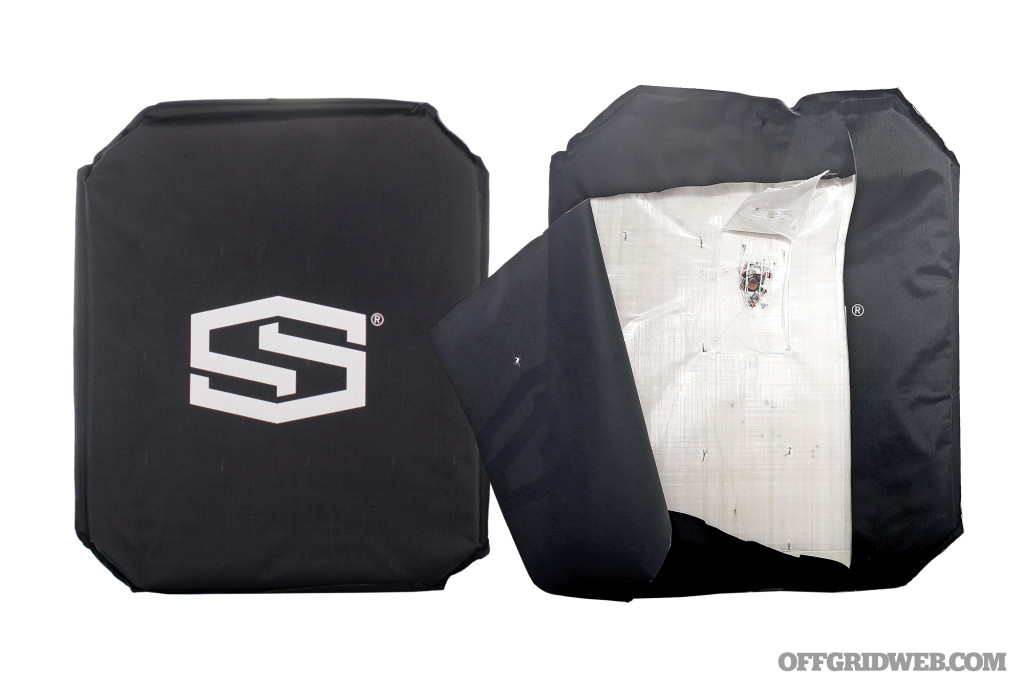
Protection Level
IIIA
Dimensions
10 by 12 by 0.26 inches
Weight
1.1 pounds
Tested Inside
Generic pack
Test Result
PASS
MSRP
$150
URL
www.shotstop.net
Notes
The IIIA soft panel had no issue defeating the 9mm caliber within the third layer of armored fabric without any bullet yawing. ShotStop doesn’t currently sell backpacks to pair its panels with so this panel and several others in this guide were tested using generic backpacks.
ShotStop BallisticBoard Level III Rigid Insert

Protection Level
III+
Dimensions
10 by 12 by 0.9 inches
Weight
4.25 pounds
Tested Inside
Generic pack
Test Result
FAIL
MSRP
$249
URL
www.shotstop.net
Notes
When we first took the ShotStop’s III+ panel out of the box, it reminded us of the ICW plates we’ve seen issued to first responders many years ago. This panel was the only panel that failed the rated calibers during testing. The 9mm round didn’t penetrate but traveled the entire panel and fragments exited the bottom edge. Fragments of the 5.56 round penetrated and exited out the back of the panel.
ShotStop BallisticBoard Level IIIA Clipboard
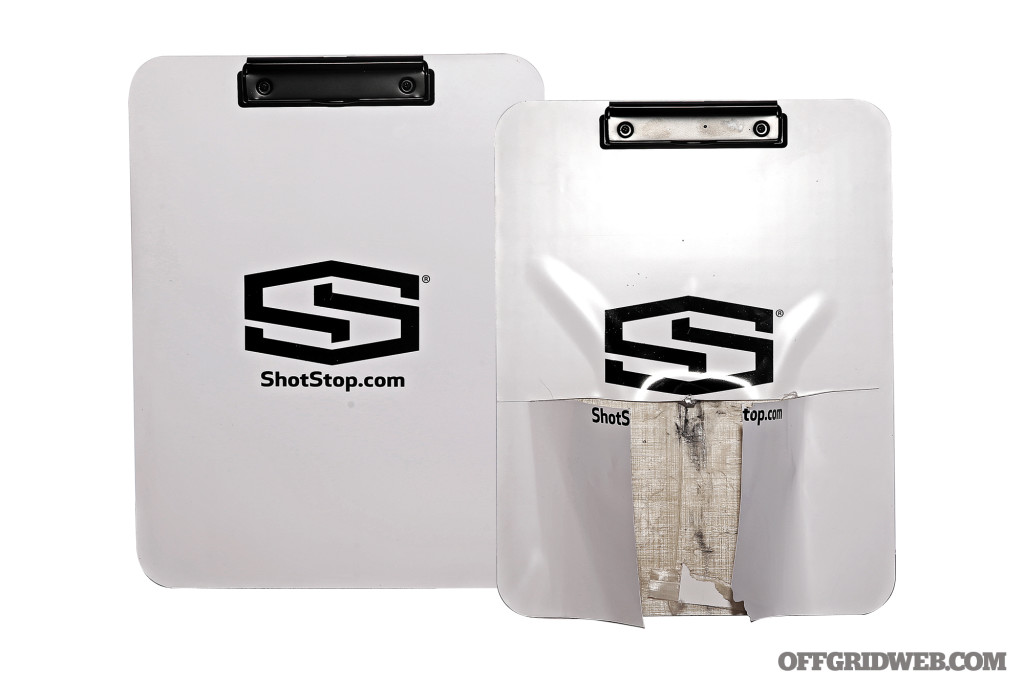
Protection Level
IIIA
Dimensions
10 by 13 by 0.26 inches
Weight
1.3 pounds
Tested Inside
Generic pack
Test Result
PASS
MSRP
$165
URL
www.shotstop.net
Notes
The IIIA BallisticBoard Clipboard is an interesting concept of an armored panel in the guise of a clipboard. This would be handy for school faculty or businessperson who isn’t always able to carry a bag with them. The 9mm bullet was stopped in the second layer of armored fabric with a 1-inch yaw of the main bullet and smaller fragments traveling over 5 inches through the panel. The back face had less than 1/4 inch of deformation. We’d put a sticker over the ShotStop branding for a more discreet look.
ShotStop BallisticBoard Level IIIA Rigid Insert
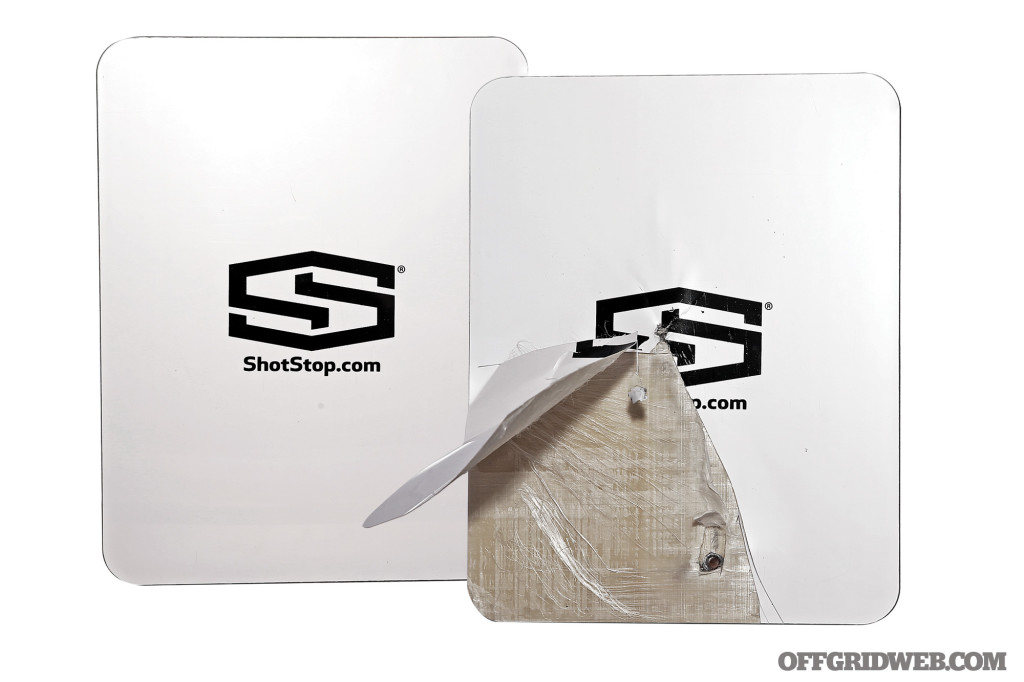
Protection Level
IIIA
Dimensions
11 by 14 by 0.26 inches
Weight
1.6 pounds
Tested Inside
Generic pack
Test Result
PASS
MSRP
$165
URL
www.shotstop.net
Notes
Shotstop’s IIIA is one of the larger panels tested and very light weight for its size. The 9mm bullet was stopped in the top four layers of armored fabric; it yawed and traveled over 4 inches through the panel before stopping. Back face deformation was less than 1/4 inch.
TuffyPacks 12×16 Ballistic Shield
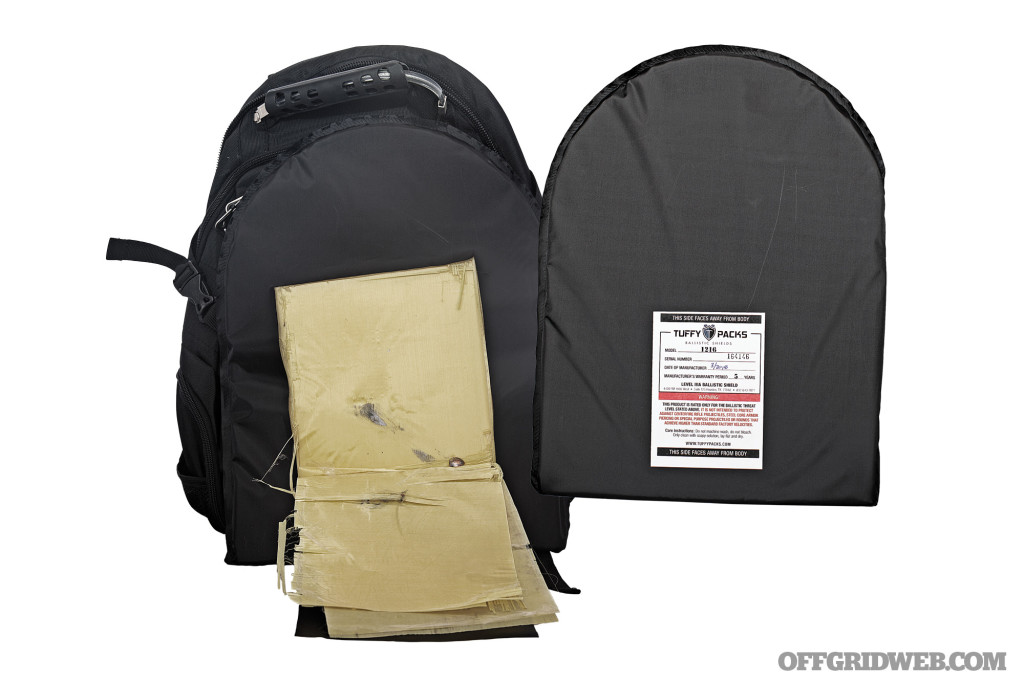
Protection Level
IIIA
Dimensions
12 by 16 by 0.30 inches
Weight
1.5 pounds
Tested Inside
SwissGear Multifunction Pack (available at TuffyPacks)
Test Result
PASS
MSRP
$157
URL
www.tuffypacks.com
Notes
Of the standalone soft panels, the TuffyPacks provides the most coverage area. The 12-by-16-inch panel is designed for children’s backpacks, and a 12-by-18 version is available for larger adult backpacks. Thanks to the way this panel fitted to the rear of the pack, it didn’t seem to get displaced easily. Tuffy offers this as a package you can buy with the pack and panel together or as a standalone insert. The TuffyPack panel had very minimal layer damage, with the 9mm bullet only penetrating through two layers. Being a soft panel, no back deformation was sustained. The 9mm round stayed fairly well within the impact area in the panel. TuffyPacks supplies this with an inconspicuous Swissgear Travel Gear backpack. The Travel Gear will fit a 17-inch laptop, is made of heavy-duty 1,200D polyester material, and opens like a clamshell to allow the backpack to be scanned by TSA without removing your laptop from your bag.
AR500 Armor Hybrid Backpack Armor
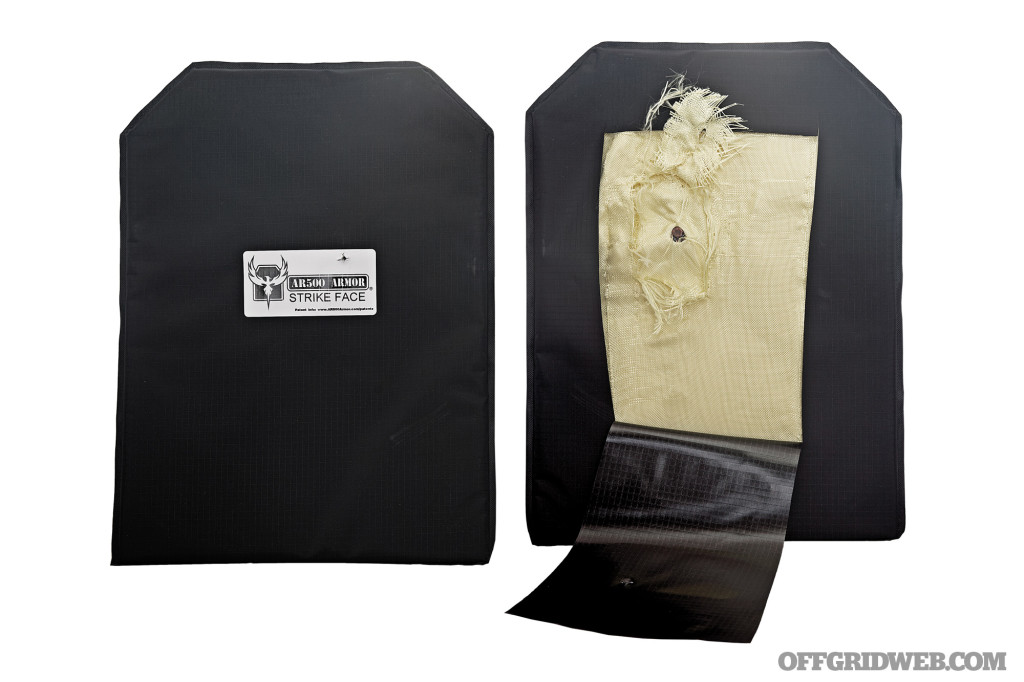
Protection Level
IIIA
Dimensions
11 by 15 by 0.25 inches
Weight
1.5 pounds
Tested Inside
Generic pack
Test Result
PASS
MSRP
$143 (at time of testing)
URL
www.ar500armor.com
Notes
AR500’s soft IIIA panel has a large coverage area and stood up to the rounds fired. The AR500 soft panel stopped the 9mm bullet in the third layer of armored fabric, and there was no bullet yaw after impact.
AR500 Armor Lightweight Backpack Armor
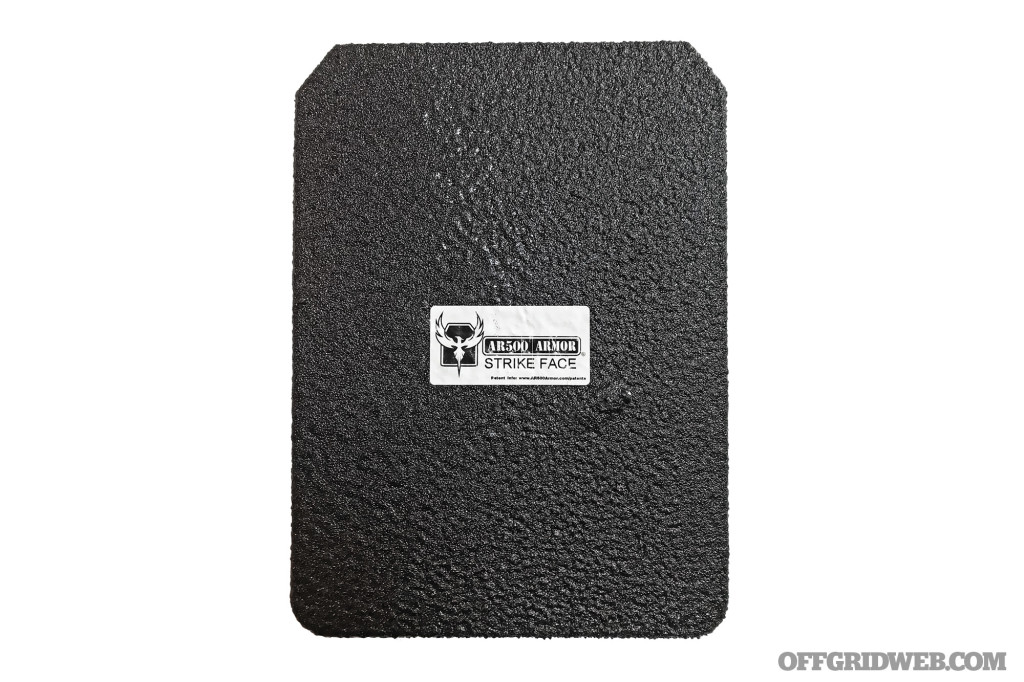
Protection Level
III+
Dimensions
11 by 15 by 0.48 inches
Weight
10.5 pounds
Tested Inside
Generic pack
Test Result
PASS
MSRP
$178 (at time of testing)
URL
www.ar500armor.com
Notes
This is the sort of plate you could put in a bag next to your desk and know that it’ll stop almost anything coming its way. We took this plate back out for some additional testing and dumped a magazine of 5.56 into it without any ill effects. But while it excels in ballistic protection, its drawback is weight. This plate tips the scales at 10.5 pounds. It may be asking too much of many people to carry this daily, but we wouldn’t mind having it nearby for emergencies. During testing, it was difficult to even locate the 5.56 impact in the panel coating. The 9mm and 5.56 bullet didn’t penetrate any further than the spall coating in the panel, and there was no back face deformation.
BulletSafe Bulletproof Backpack Panel

Protection Level
IIIA
Dimensions
10 by 14 by 0.55 inches
Weight
1.5 pounds
Tested Inside
Generic pack
Test Result
PASS
MSRP
$99
URL
www.bulletsafe.com
Notes
The BulletSafe panel is a semi-rigid panel and fit easily in all the backpacks we tried it in. It had very insignificant panel deformation during testing and captured the 9mm fragments without issue. It allowed some rigidity to the pack and comes in a polyester pouch to guard against moisture. The BulletSafe panel stopped the 9mm bullet within the first six layers of its material. The bullet stayed directly at the impact point without any yaw throughout the panel.
Dfndr Armor Handgun Armor Backpack Body Armor (EIIIASA-B)
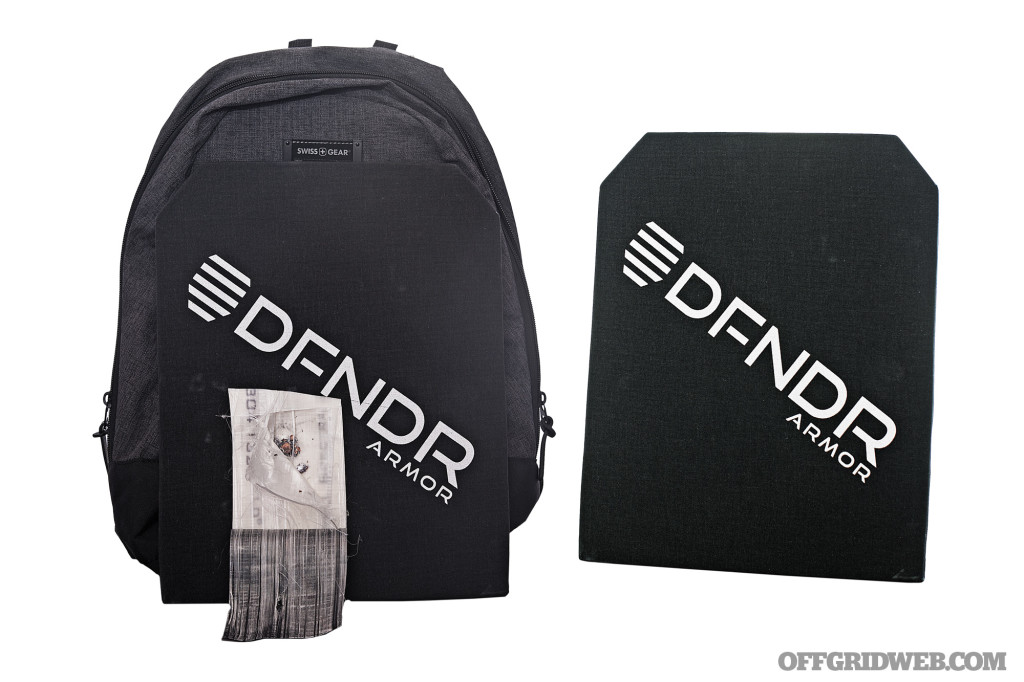
Protection Level
IIIA
Dimensions
11 by 14 by 0.6 inches
Weight
1 pound
Tested Inside
Generic pack
Test Result
PASS
MSRP
$190
URL
www.dfndrarmor.com
Notes
For its size, the Dfndr panel was the lightest. Its size and rigid shape fit a laptop sleeve perfectly and provided a large surface area as a shield. The panel was tested in a Swissgear backpack that is very inconspicuous and will hold a 15-inch laptop. The 9mm bullet was stopped in the third layer of armored fabric with the bullet fragmenting within less than 1 inch of yaw from point of impact. The back face of the panel had less than 1/2 inch deformation to the panel.
Man-PACK Bulletproof Backpack Insert

Protection Level
IIIA
Dimensions
13 by 10 by 0.25 inches
Weight
1 pound
Tested Inside
Man-PACK Apollo
Test Result
PASS
MSRP
$140
URL
www.man-pack.com
Notes
The Man-PACK backpack insert is a rigid panel similar to the other panels. With a rigid panel, there’s less worry that it’ll get shoved to the bottom of a pack. You can purchase the backpack and panel separately or together, and Man-PACK also offers other bags and packs to choose from. The Man-PACK armored panel was tested in the Apollo solar backpack. The backpack itself is roomy and has compartments to hold your laptop, books, electronics, and maps. And to keep your electronics charged up, it has an integrated 7-watt solar cell. The 9mm bullet was stopped in the third layer of armored fabric and had all but a few fragments dissipate throughout the panel, with some traveling as far as 6 inches from point of impact. The back face of the plate had 1/2 inch deformation from the impact.
Citizen Armor Aegis Armored Shield Insert
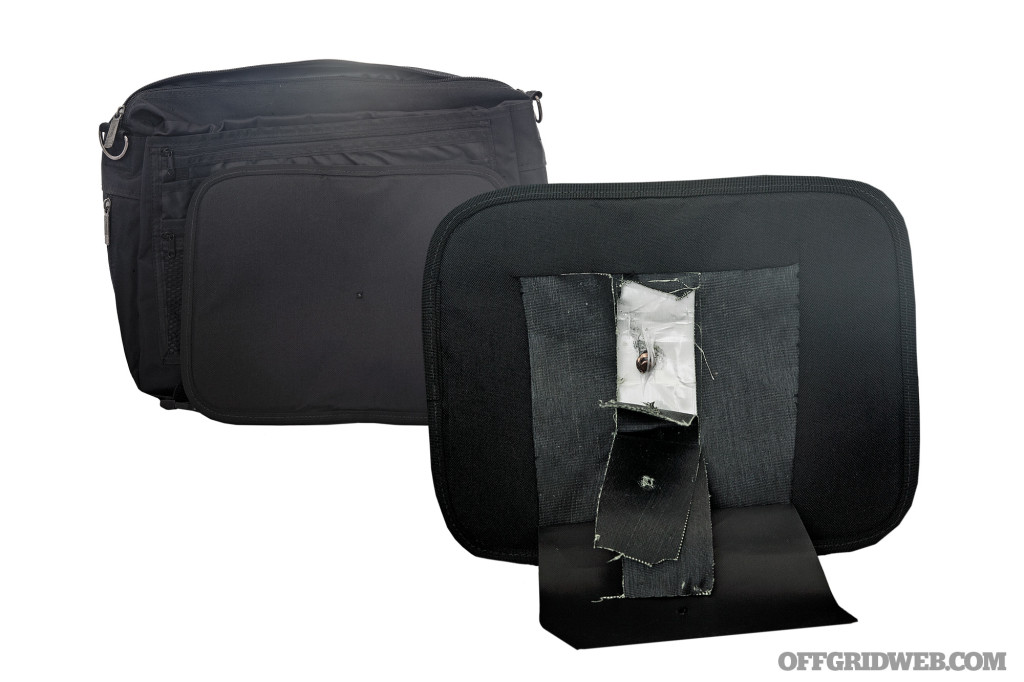
Protection Level
IIIA
Dimensions
13 by 10 by 0.25 inches
Weight
14 ounces
Tested Inside
Generic pack
Test Result
PASS
MSRP
$99
URL
www.citizenarmor.com
Notes
This is a very inconspicuous, semi-rigid panel. The Citizen Armor Panel stood up to testing with minimal deformation to the rear of the panel. One concern is that the only labeling is the “Citizen Armor” brand tag in the corner. Missing were any typical markings of rating, date of manufacture, or registered manufacture. Citizen Armor should add this labeling to their panels, which at minimum would allow customers to keep track of the panel, its rating, and expiration date. The Citizen Armor Panel stopped the 9mm bullet in the second layer of armored fabric and had less than a 1/4 inch deformation to the back face of the panel. The 9mm bullet was trapped at point of impact without any yaw.
More From Issue 28
Don’t miss essential survival insights—sign up for Recoil Offgrid's free newsletter today!
Read articles from the next issue of Recoil Offgrid: Issue 29
Read articles from the previous issue of Recoil Offgrid: Issue 27
Check out our other publications on the web: Recoil | Gun Digest | Blade | RecoilTV | RECOILtv (YouTube)
Editor's Note: This article has been modified from its original version for the web.


